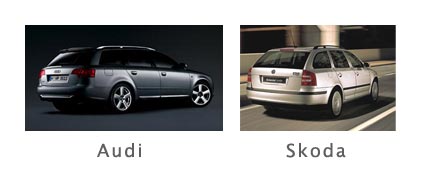Teaching:TUW - UE InfoVis WS 2005/06 - Gruppe 01 - Aufgabe 1 - Aesthetic-Usability Effect
Introduction[edit]
Usability practices leading to the simplification of form and function improve the overall aesthetics.<br\> The aesthetic-usability effect concludes that more aesthetic designs appear easier to use - regardless of whether they are or not. It is not enough for an object to merely function well. When aesthetically designed, users allow for more tolerance, and are then willing to exert more effort. When a user feels that the design is easy to use, it leads to more broadened interaction. [Klauser and Walker,2007]
Definitions[edit]
- The Aesthetic-Usability Effect is a condition whereby users perceive more aesthetically pleasing designs to be easier to use than less aesthetically pleasing designs. [Boulton, 2005]
- The aesthetic usability effect describes a phenomenon in which people perceive more-aesthetic designs as easier to use than less-aesthetic designs—whether they are or not. The effect has been observed in several experiments, and has significant implications regarding the acceptance, use and performance of a design. [Design, 2005]
Example[edit]
Audi or Skoda?
Cars have been around for ages - since Ford’s little black number. They all pretty much do the same thing and look similar. Four wheels, seats, they go from point A to B. Why do people buy one over the other? One word. Design.
Aesthetics and Car Design have been fused for many years. It’s what defines a car, it’s what gives a car it’s personality and importantly for the manufacturers, it’s what gives the car it’s competitive edge in the market place.

What car would you rather have - a Skoda Octavia Estate, or an Audi A4 Avant? I’d rather have the Audi actually even though it’s much more expensive. Don’t get me wrong, the Skoda is a nice looking car but the company has never really shifted the stigma attached to the brand, which was brought about by bad, cheap design. Why did I pick those two cars? Well, they’re both the same really. Same chassis and parts, they both have four wheels, good fuel economy and safety, it’s only the design and brand which sets them apart.
The Aesthetics of the Audi make it a more desirable product and i’m sure if you did a survey you would find people thought they could use it better than the Skoda. [Boulton, 2005]
Bibliography[edit]
- [Boulton, 2005] Mark Boulton. Aesthetic-Usability Effect. Created at: March 6, 2005. Retrieved at: November 3, 2009. http://www.markboulton.co.uk/journal/comments/aesthetic_usability_effect/
- [Capp, 2004] Stephan Capp , Universal Principles of Design, 2004, http://www.cappcreative.com/content/universal.php
- [Design, 2008] Aesthetic Usability Effect. Retrieved on: January 16, 2008. http://courses.washington.edu/art479/media/universal_principles1.pdf
- [Klauser and Walker,2007] Kristin Klauser, Vanessa Walker. It's About Time: An Affective and Desirable Alarm Clock. Proceedings of the 2007 conference on Designing pleasurable products and interfaces.Page 407-420. Helsinki,Finnland. ACM New York, NY, USA. 2007
Image[edit]
Img.1, Quelle: http://www.markboulton.co.uk/journal/comments/aesthetic-usability-effect